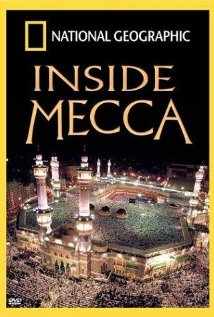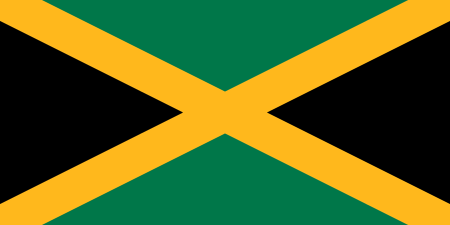Crimean Gothic
| |||||||||||||||||||
Read other articles:

Celurut Roosevelt Crocidura roosevelti Status konservasiRisiko rendahIUCN41355 TaksonomiKerajaanAnimaliaFilumChordataKelasMammaliaOrdoEulipotyphlaFamiliSoricidaeGenusCrociduraSpesiesCrocidura roosevelti Heller, 1910 Tata namaDinamakan berdasarkanTheodore Roosevelt DistribusiPersebaran celurut Roosevelt lbs Celurut Roosevelt (Crocidura roosevelti) adalah sebuah spesies mamalia dalam keluarga Soricidae. Spesies tersebut ditemukan di Angola, Kamerun, Republik Afrika Tengah, Republik Demokratik Kong…

Unjuk rasa 1968Bagian dari Kontrabudaya pada 1960-an dan Perang DinginUnjuk rasa Helsinki Agustus 1968 menentang invasi CekoslowakiaTanggal1968Sebab Anti-semitisme Otoritarianisme Kapitalisme Kematian Che Guevara Imperialisme Rasisme Revisionisme Seksisme Tujuan Anti-kapitalisme Anti-imperialisme Anti-rasisme Hak sipil dan politik Environmentalisme Feminisme Liberalisasi HasilRevolusi-revolusi sosial Unjuk rasa 1968 terdiri dari memuncaknya konflik sosial di seluruh dunia, yang umumnya dicirikan…

本表是動態列表,或許永遠不會完結。歡迎您參考可靠來源來查漏補缺。 潛伏於中華民國國軍中的中共間諜列表收錄根據公開資料來源,曾潛伏於中華民國國軍、被中國共產黨聲稱或承認,或者遭中華民國政府調查審判,為中華人民共和國和中國人民解放軍進行間諜行為的人物。以下列表以現今可查知時間為準,正確的間諜活動或洩漏機密時間可能早於或晚於以下所歸類�…

Organization Oil and Pipelines AgencyAbbreviationOPAPredecessorGovernment Pipelines and Storage System (GPSS)Formation1 December 1985TypeStatutory CorporationPurposeSupply marine fuel for the MoDHeadquartersWeevil Lane, Gosport, HampshireRegion served United KingdomMembership Board Chairman, Chief Executive, MOD Sponsor, Non-Executive DirectorsLeaderAdrian Jackson (Chief Executive)Parent organizationMinistry of DefenceBudget Total expenditure £22,949,000 (2018/19)Staff 19 (March 2009)[1]…

Uri Bar-Ner Uri Bar-Ner is a senior adviser to the President of the America-Israel Friendship League, the former Israeli ambassador to Turkey from 1998–2001,[1] and he served as Israeli Consul General in Chicago and Deputy Consul General in New York City, USA.[2] Bar-Ner was the deputy Director General of the Israeli Ministry of Foreign Affairs and served in diplomatic missions in Europe and Asia. He has a Bachelor of Arts from Hebrew University of Jerusalem and a Master of Art…

City in southwestern Syria This article is about the city in Syria. For the river in Morocco, see Draa River. For the traditional Quranic schools in Senegal, see Daara. For other uses, see Dara (disambiguation). City in SyriaDaraa دَرْعَاCityDaraaCoordinates: 32°37′N 36°6′E / 32.617°N 36.100°E / 32.617; 36.100Grid position253/224 PALCountry SyriaGovernorateDaraaDistrictDaraaSubdistrictDaraaGovernment • GovernorLouay Khareta[1]E…

First tankōbon volume cover, released by Shogakukan on August 9, 2002 The chapters for the manga series Kenichi: The Mightiest Disciple were written and illustrated by Syun Matsuena. The manga is a remake of Tatakae! Ryōzanpaku Shijō Saikyō no Deshi (戦え!梁山泊 史上最強の弟子, lit. Fight! Ryōzanpaku, History's Strongest Disciple), which was serialized in Shogakukan's monthly manga magazine Shōnen Sunday Super from 1999 to 2002. The story of manga focuses on Kenichi Shirahama, …

November 19, 1863 historical event Consecration of the National Cemetery at GettysburgAbraham Lincoln (center) at the consecration just after arriving c. noon and ~3 hours before the speech.[citation needed] In 2006, two additional Gettysburg procession photographs of Lincoln were identified in the Library of Congress.[1]DateNovember 19, 1863Time~3 PMVenueCemetery Hill, Gettysburg National CemeteryLocationGettysburg, Adams Co, PennsylvaniaCoordinates39°49′11″N 77°13�…

Island in the Philippines This article is about the major island in the Visayas, Philippines. For the small island in Bicol Region, Philippines, see Panay Island (Catanduanes). For other uses, see Panay (disambiguation). Po-ni redirects here. For the former state in Borneo, see History of Brunei. PanayPanay island satellite image captured by Sentinel-2 in 2016Location within the PhilippinesGeographyLocationSouth East AsiaCoordinates11°09′N 122°29′E / 11.150°N 122.483°E&#x…

Josef Wiesehöfer (sinh ngày 5 tháng 4 năm 1951 tại Wickede, Bắc Rhine-Westphalia) là một học giả cổ điển người Đức, hiện ông làm Giáo sư lịch sử cổ đại tại Khoa Cổ điển (Institut für Klassische Altertumskunde) của Trường Đại học Kiel. Ông là nhà chuyên môn danh tiếng về nước Ba Tư trước thời Hồi giáo và những hình thức tương tác giữa nền văn hóa Hy Lạp - La Mã và nền văn minh Cận Đông cổ �…

Dalam nama Korean ini, nama keluarganya adalah Jo. Jo Young-min2015 Boyfriend Yangsan Awards FestivalLahir24 April 1995 (umur 29)Seoul, Korea SelatanKebangsaanKoreaPendidikanSeoul Performing Arts High SchoolPekerjaanAktor, Model, PenyanyiTahun aktif2002–sekarangAgenStarship EntertainmentDikenal atasBoyfriend (grup musik) High Kick! Save the Family All My Love For YouTinggi18 m (59 ft 1 in)KeluargaJo Kwang-min (saudara kembar) Jo Young-min (Hangul: 조영민; l…

Si EntongGenre Drama Komedi Fantasi Religi Pembuat Indika Entertainment Mega Entertainment Ditulis oleh Naijan Lengkong Zaenal Radar T Imam Salimy Skenario Naijan Lengkong Zaenal Radar T Imam Salimy Pemeran Fachri Muhammad Adi Bing Slamet Rheina Maryana Anna Shirley Rana Cynthia Niesrina Ucup Nirin Yuni Sulistyawati Kemal Fathurrakhman Penggubah lagu temaBenyamin SLagu pembukaSang Bango oleh Benyamin SLagu penutupSang Bango oleh Benyamin SNegara asalIndonesiaBahasa asliBahasa IndonesiaJmlh. musi…

أيغينيو خريطة الموقع تقسيم إداري البلد اليونان [1] إحداثيات 40°30′08″N 22°32′32″E / 40.502222222222°N 22.542222222222°E / 40.502222222222; 22.542222222222 السكان التعداد السكاني 3683 (resident population of Greece) (2021)4149 (resident population of Greece) (2001)4264 (resident population of Greece) (1991)4153 (resident population of Greece) (2011) مع�…

بيتر كراوموسكي معلومات شخصية الميلاد 16 أكتوبر 1978 (العمر 45 سنة)سيدني الجنسية أستراليا مسيرة الشباب سنوات فريق 1999 New South Wales Institute of Sport [الإنجليزية] المسيرة الاحترافية1 سنوات فريق م. (هـ.) 2001 روكديل إليندين [الإنجليزية] 2001–2002 Bonnyrigg White Eagles FC [الإنجليزية]̴…

Yang Kukuh, Yang RuntuhSutradaraWahab AbdiProduserFerry AngriawanDitulis olehMakmur HendrikBerdasarkanCerpen Yang Kukuh yang RuntuhBuku Di Langit Ada Saksi karya:Makmur HendrikPemeranMarissa HaqueIkang Fawzi Frans TumbuanSofia AmangVivi SamodroAnton IndracayaPoppy FaridaSofia W.D.Henky SolaimanDeliana SurawidjayaLira RoesdianaPenata musikBilly J BudiardjoPenyuntingSK SyamsuriDistributorVirgo Putra FilmsTanggal rilis 1985 (1985) Durasi99 menitNegaraIndonesia Yang Kukuh, Yang Runtuh ada…

This article has multiple issues. Please help improve it or discuss these issues on the talk page. (Learn how and when to remove these template messages) This article needs additional citations for verification. Please help improve this article by adding citations to reliable sources. Unsourced material may be challenged and removed.Find sources: Inside Mecca – news · newspapers · books · scholar · JSTOR (May 2019) (Learn how and when to remove this messa…

German World War II submarine For other ships with the same name, see German submarine U-33. U-33 in 1937. Note that the boat's number is still visible on the conning tower. It was painted out at the beginning of the war History Nazi Germany NameU-33 Ordered25 March 1935 BuilderGermaniawerft, Kiel Cost4,189,000 Reichsmark Yard number556 Laid down1 September 1935 Launched11 June 1936 Commissioned25 July 1936 FateSunk by depth charges from HMS Gleaner, 12 February 1940 General characteristics Clas…

Disambiguazione – Lockheed rimanda qui. Se stai cercando altri significati, vedi Lockheed (disambigua). Questa voce o sezione sugli argomenti aviazione e aziende è priva o carente di note e riferimenti bibliografici puntuali. Sebbene vi siano una bibliografia e/o dei collegamenti esterni, manca la contestualizzazione delle fonti con note a piè di pagina o altri riferimenti precisi che indichino puntualmente la provenienza delle informazioni. Puoi migliorare questa voce citando l…

Sport Vlaanderen-Baloise2017GénéralitésÉquipe Flanders-BaloiseCode UCI SVBStatut UCI ProTeamPays BelgiqueSport Cyclisme sur routeEffectif 22Manager général Christophe Sercu (en)Directeurs sportifs Walter Planckaert, Luc Colijn, Hans De Clercq, Andy Missotten (d)Topsport Vlaanderen-Baloise 2016Sport Vlaanderen-Baloise 2018modifier - modifier le code - modifier Wikidata La saison 2017 de l'équipe cycliste Sport Vlaanderen-Baloise est la vingt-quatrième de cette équipe. Préparation …

كارلا كامبل معلومات شخصية الميلاد سنة 1981 (العمر 42–43 سنة) جامايكا مواطنة جامايكا لون الشعر شعر بني الحياة العملية المهنة عارضة تعديل مصدري - تعديل كارلا كامبل (بالإنجليزية: Carla Campbell) هي عارضة جامايكية، ولدت في 1981 في جامايكا.[1][2][3] روابط خارج�…